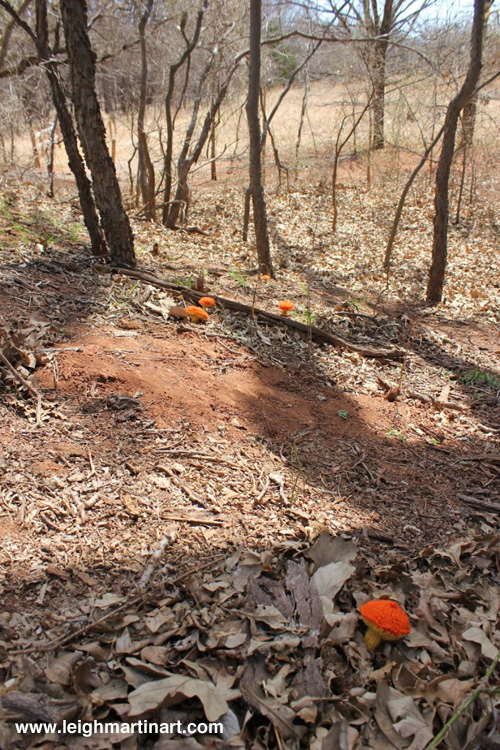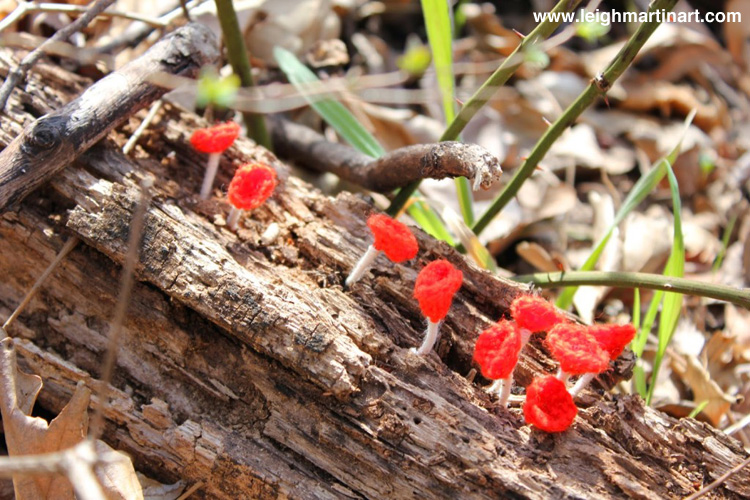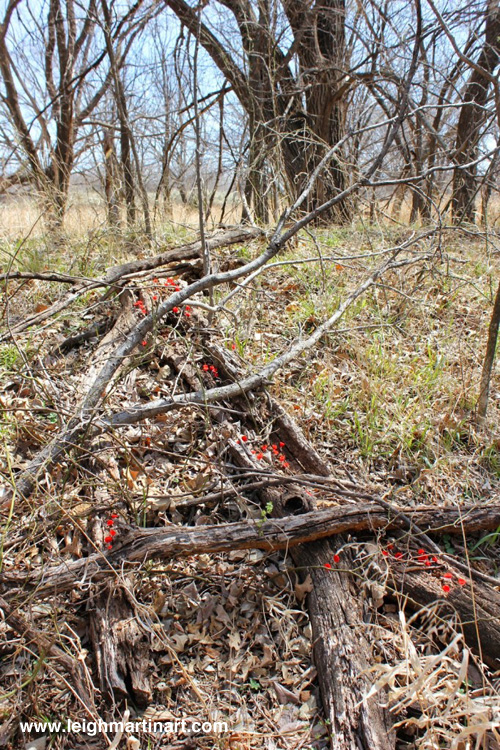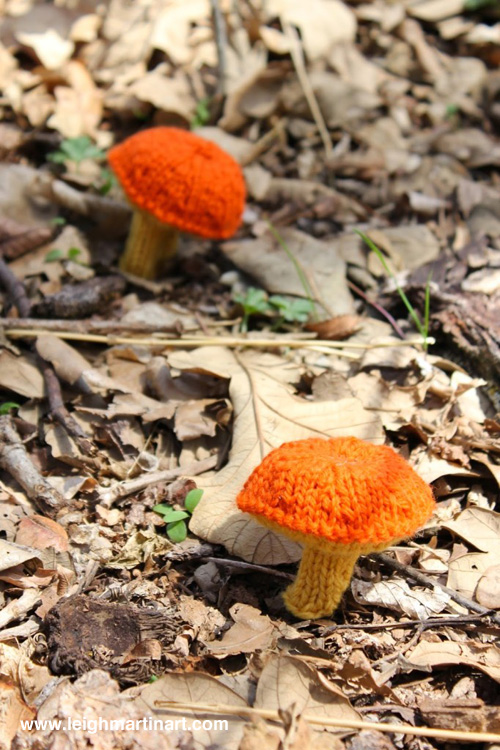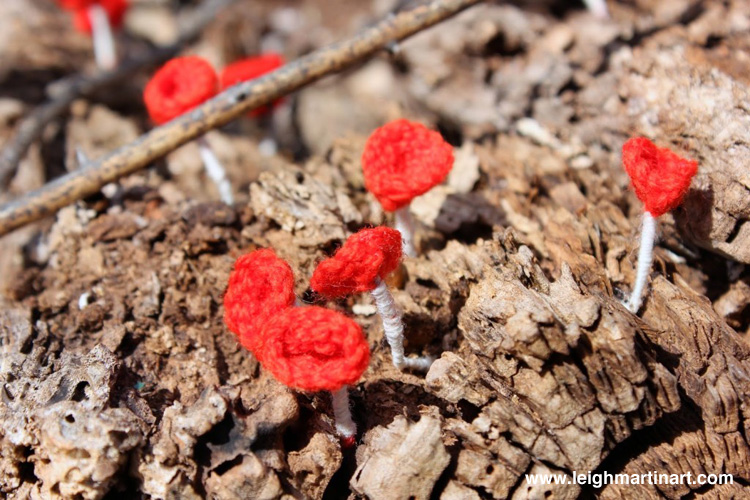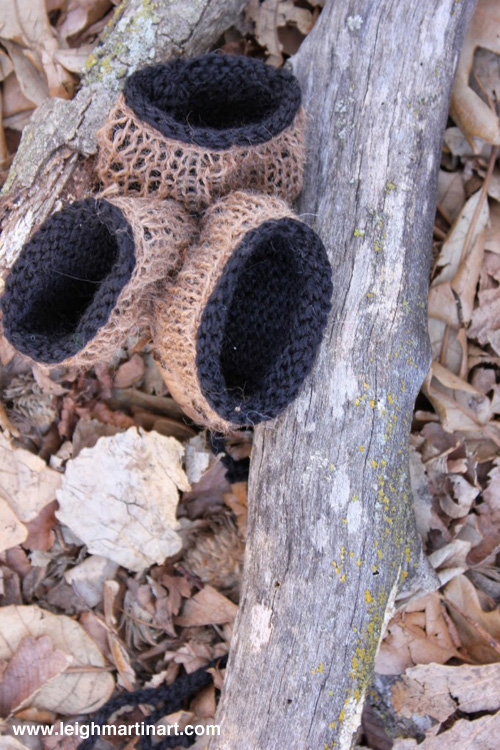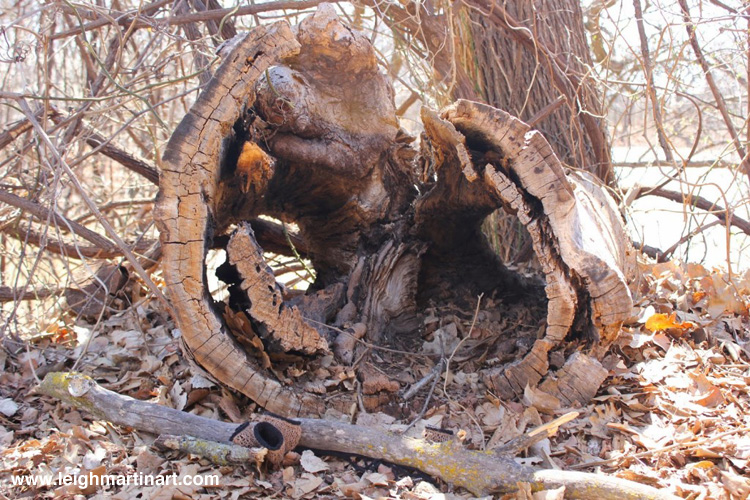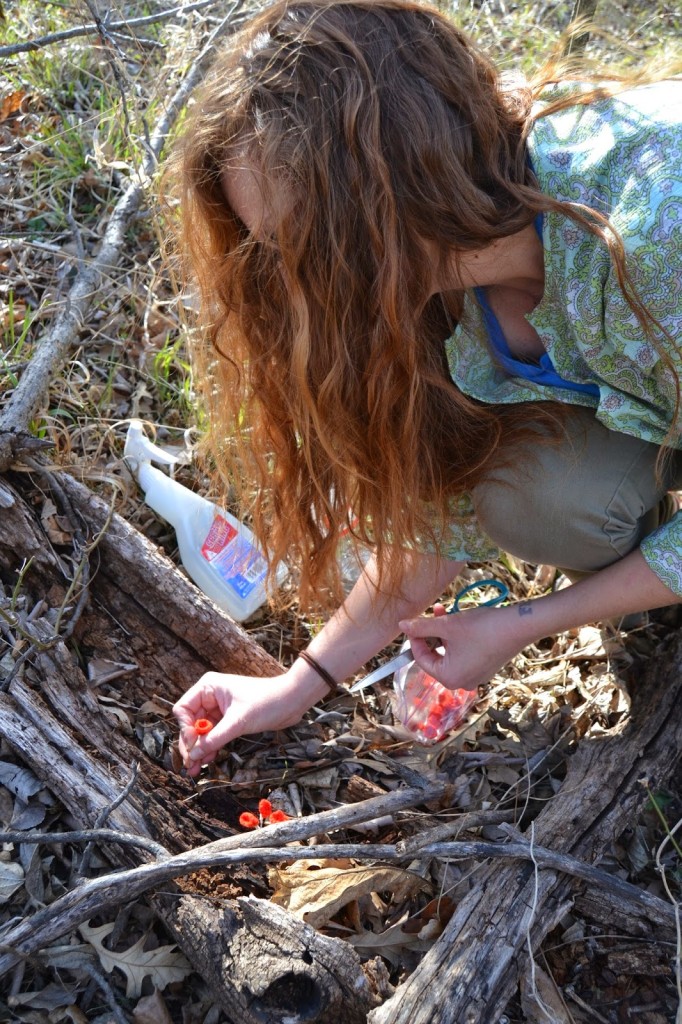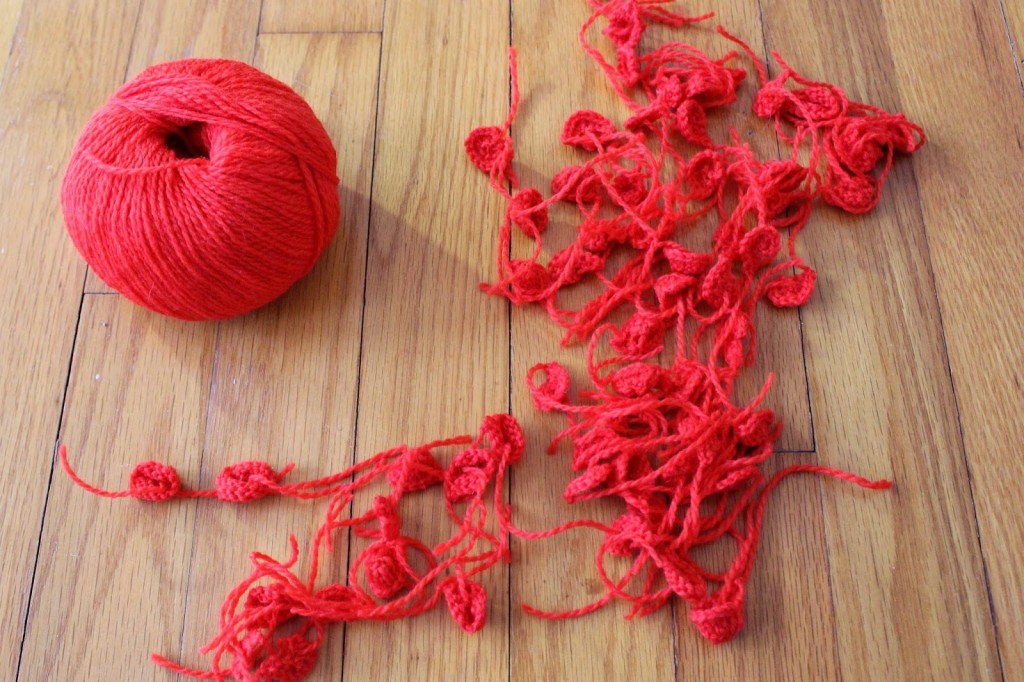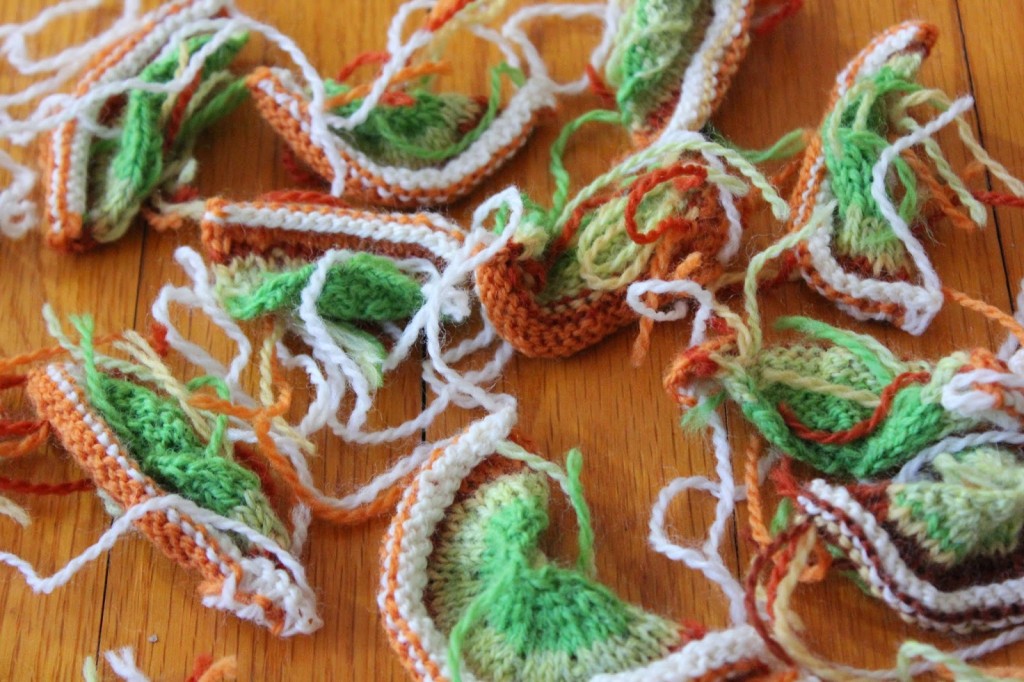As promised, here are some photos of the outdoor installations for Niche, from a distance. I took down the exhibit yesterday, and it was interesting to see how the pieces had changed after being out in the rain and sun for a month. I am told that the realism of the installations had some people going for a minute, but I'm glad that they got people observing the environment of the park and hope that they continue to do so in their daily lives. I would like to give a big Thank You! to the staff at Martin Park Nature Center for being so accommodating and awesome throughout the duration of the exhibit, and thank you to everyone who went by and checked it out!
First up… burnt orange bolete. This was probably the most conspicuous installation, set underneath a giant bur oak tree on Trail B. Every installation is fun, but placing multiple large mushrooms in a forest tends to make me a little giddy. By the way, if you fall in love with these and would like to have one of your own, I have some available in my Etsy shop!
False turkey tail. Probably the most difficult to find, because it sat down off the trail a few yards, and to be honest I think some plant life started to obscure it a small amount toward the end. But part of the fun is finding it, right? So easy to overlook, but vibrant once you see it. This was located on the west side of Trail loop A.
Stalked scarlet cup. Directly next to a bend in the trail (on Trail C), some people stopped and told me they thought they were tiny red flowers at first, while I was taking the photos of them. Installing these reminded me of Decomposition: Colony I & Decomposition: Colony II, because they were so small and numerous. Nostalgia for the beginning of my installation work; so much has happened since then!

